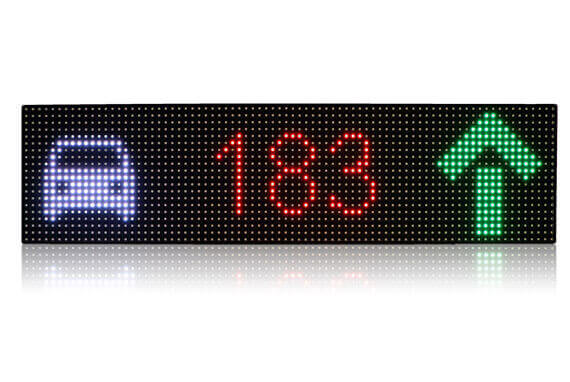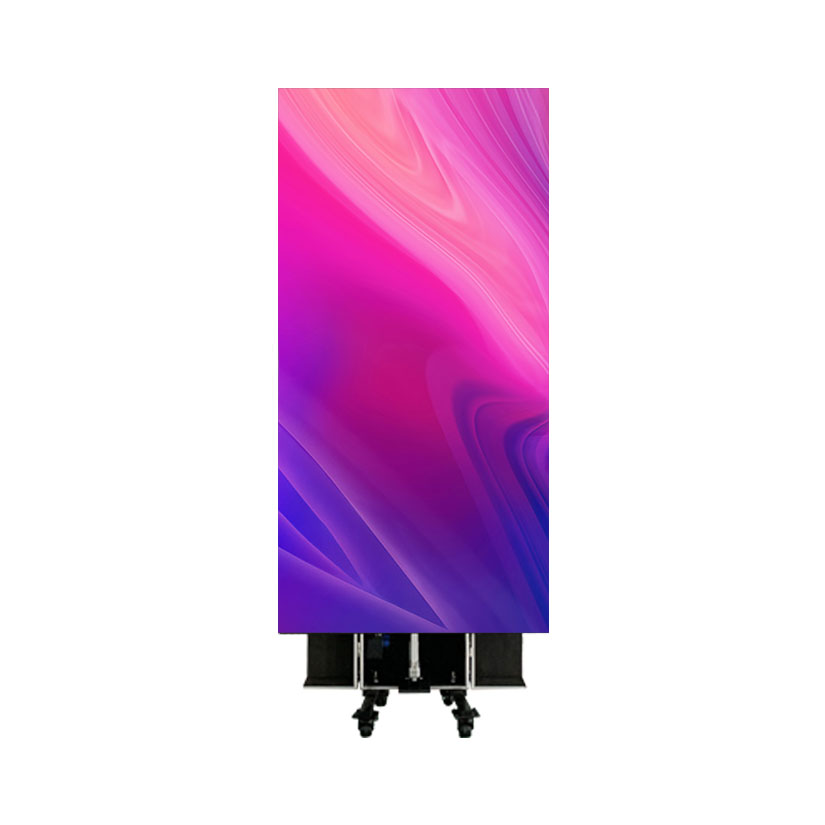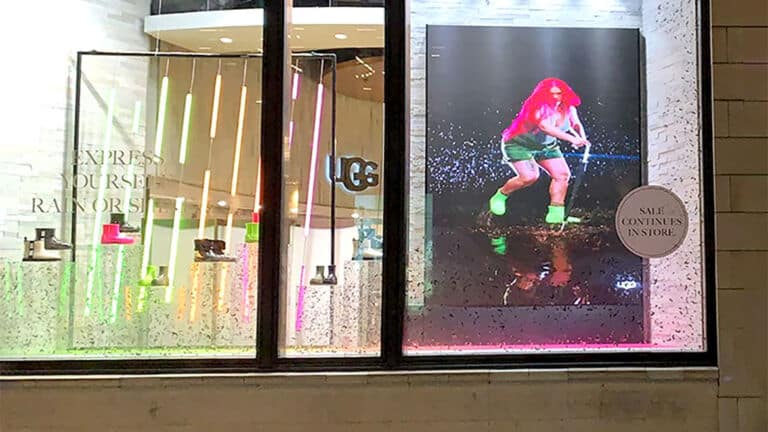Pixel pitch and resolution are extremely crucial when it comes to looking into LED displays. Both of these elements have a direct impact on the clarity, the quality and overall appearance provided by the display. This is why these two aspects are important:
1. Image Quality
Pixel Pitch refers to the distance from the center LED pixel to the next. A lower pixel pitch indicates that the LEDs are closer to each other, which results in more dense pixel and a higher resolution. This leads to sharper images that have more detail, which are especially essential for images or texts with finer detail.
Resolution: This refers to the number total of pixels shown, generally determined in the form of width x height (e.g. 1080 pixels x 1920). Higher resolutions allow for more detail to be displayed and creates an immersive experience. This is crucial on large screens, where the user is near the screen.
2. Viewing Distance
The optimal viewing distance is closely tied to pixel pitch. In displays that can be viewed up close like those found in exhibitions or retail stores, as well as indoor screens, a lower resolution is needed to avoid pixelation. For outdoor billboards as well as large-scale displays being viewed from a distance it is possible to use a higher resolution may suffice since the pixels won't be visible.
3. Content Versatility
Displays with lower pixels and higher resolution can accommodate a wider variety of content, such as HD video and complex graphics. This flexibility is crucial for applications that need dynamic media. Examples include digital signage, studios for broadcasting as well as control rooms.
4. Cost-related Implications
Yes, having a smaller size of pixels offers a better image however the price to produce the display will be significantly higher. Producing screens with a high resolution can be costly because of the number of LEDs utilized. Think about the purpose and distance to view when balancing the cost of high resolution against budget.
5. Application Specificity
The importance of resolution and pixel pitch will vary based on the specific application:
Indoor Displays - Often smaller pixels are needed (e.g. between 1.2mm and 2.5mm) in order to keep high resolutions at close viewing distances.
Outdoor Displays: May have larger pixel pitches (e.g. 4mm up to 10mm) because they are viewed from a greater distance, and the resolution is less crucial.
6. Product longevity and its ability to be upgraded
The pixel pitch is decreasing as display technology advances. This allows higher resolutions even in smaller spaces. By investing today in a display with best pixel pitch they will be more efficient and useful for a longer period of time. This will reduce the need to replace screens often.
Conclusion:
Pixel pitch and resolution play a critical role in making the best use of LED displays particularly when it comes to image quality, viewing experience and flexibility of content. You should consider your budget, your intended audience, and the purpose of your display when selecting LED displays. View the top cob led display for website tips including transparent led display screen, rental led display screen, led video wall panels, outdoor led monitor, tv the wall, video wall church, transparent led screen display, advertising tvs, display light led, video walls and more.

What Is The Significance Of Weight And Portability When Researching Led Displays?
Consideration of weight and portability is important when selecting LED displays. This is particularly true in situations where versatility, installation ease, and ease of transportation are the most important considerations. The importance of these aspects:
1. Simple Installation and Setup
Weight LED displays which weigh less are simpler to install, especially when they need to be hung on ceilings, walls or other structures. Weight: Large displays require support systems that are heavier. This can complicate installation and raise costs.
Portable Displays are perfect for exhibitions, temporary installations and other events. They can be easily put up and taken down. Their lightweight design lets them be transported easily and set up to save both time and energy.
2. Staging and Staging
Lightweight and portable LED panels play a significant role in the rental and staging markets that requires displays to move regularly from one location to the next. They reduce the expense of transport, allow for a quicker turnaround between events, and reduce damage.
Modularity. Portable LED displays come with modular designs, which makes them simple to take apart and put back together. This flexibility is essential to create display layouts that meet different event needs.
3. The structural needs
Support Structures. LED displays that weigh more require more sturdy and complicated mounting structures. This could increase the overall cost and the complexity. Displays with lighter weights can be supported by simpler and less costly structures. This makes them more adaptable to different settings.
Venue Limitations: Some venues have weight limits on their buildings, specifically for ceiling or wall mounts. If you choose a display that is lightweight, you can ensure that your installation will not exceed these weight limits.
4. Transport and Logistics
Shipping costs The weight and the dimension of LED displays can directly affect the shipping and handling costs. It is more affordable to ship smaller displays particularly for large-scale deployments.
Storage and Handling Portable and lightweight display units are easy to store. They also require less space and logistical process can be made simpler, which is vital for businesses that need to transport displays from one location to another.
5. Flexible in use
Reconfigurability: Lightweight, portable displays are typically modular, which means they can be rearranged into different shapes and sizes to suit various requirements. This is especially beneficial for installations with a creative flair, where flexibility in design is important.
Displays that can be used in a variety of settings. They are able to be used in many different situations, ranging from pop-up events for small gatherings to large outdoor concerts. This versatility is not feasible with larger displays.
6. Safety Factors
Lower Risk: Lighter displays offer less risk in handling and installation which reduces the risk of damage or accidents to the display. It is vital in areas with frequent adjustments or movement of the display.
Compliance: Weight limits can be determined by safety regulations in certain instances, particularly for installations that are placed in public areas. To avoid any issues related to compliance, it is crucial to ensure that the display complies with these standards.
7. Energy Efficiency
It is not always directly related with power consumption, but light displays are designed to be energy efficient. Displays with LEDs that are portable can use less energy. This is advantageous in environments with low power, or when operational costs are the main concern.
Conclusion:
LED displays are very lightweight and portable item. This is crucial when it comes to applications that require constant moving, temporary installations, or environments where there are structural constraints. These factors affect not only the ease of transporting and setup, but also the flexibility and security of the display. It is essential to consider portability and weight when researching LED displays if your application involves frequent relocation, rapid installation, or conformity to specific structural or safety standards. Follow the top led rental screen for website examples including led board, advertising tvs, flexible led display, transparent led display screen, advertising tvs, church led wall, led screen display, outdoor screen led, outdoor led monitor, led outdoor display screen and more.

What Is The Importance Of Color Accuracy And Calibration When Researching Led Displays?
In particular, color accuracy and calibration is crucial when it comes to LED displays that are required to be utilized in applications which require superior visual quality. Why are these factors important?
1. Visual Quality and Realistic Realism
Color Accuracy: The extent to which the LED display faithfully reproduces colours that the designers of the material envisioned. High color accuracy makes videos and images appear vivid and real, while colors appear exactly as they should.
Importance: In applications like broadcasting and advertising retail, professional and professional presentations, a precise colour reproduction is vital for maintaining visual appeal and effectively delivering the message.
2. Brand Integrity
Consistency in Branding: For businesses who rely on certain colors for branding the accuracy of color is crucial. The brand's identity can be affected if the color is not correct.
Application: To ensure a consistency in brand image across all platforms, it's important to maintain brand colors in a precise manner.
3. The Effects of Audience Engagement
Enhanced Experience for Viewers Displays that have high color accuracy will provide a more immersive experience to viewers. Color accuracy helps convey emotions and messaging more effectively, increasing the overall impact.
Application: In places like theaters, museums, or any other place in which the aim is to provoke an emotional response from the viewer, accurate color will ensure that people experience the content in the manner they were intended to.
4. Content Creator Intent
An accurate representation: Designers and designers often spend considerable time creating visuals that use specific color palettes. It is essential that designers and artists are able to accurately display their colors.
Application: For fields like digital arts photography, film, or other fields in which colors play crucial roles in storytelling and aesthetic appeal, it's essential to keep the color accuracy. This is in keeping with the vision of the artist.
5. Calibration For Consistency
Uniformity across Panels: Calibration is used to make sure that all panels in the LED display have been calibrated to ensure that they display the same colors and brightness, which avoids mismatches or seams. This is crucial for large displays made up of many panels.
Even the most sophisticated displays will fade in color as time passes. It is important to regularly calibrate the display so that it can meet standards and maintain a constant performance.
Application: For video walls or large outdoor screens or any other multi-panel setup the importance of calibration is getting a smooth and uniform appearance. This is crucial for high-profile, professional installations.
6. The impact of content types
Different kinds of content: Different types of content require different levels of accuracy in color. For example medical imaging displays need extreme accuracy to guarantee the correct diagnosis, while advertising displays may be more focused on the intensity and color.
Application: In fields such as retail and high-end design medical imaging, or medical imaging, the capability to use precisely calibrated color settings is vital to ensure that the display meets the demands of the information it displays.
7. Technology and Specifications
Bit Depth and Color Gamut Displays with a high degree of bit depth and large color gamuts (such as DCI-P3 and Rec. 2020 displays ) are more precise and can reproduce a wider spectrum of colors. When selecting a display, it is essential to understand these specifications.
Modern LED displays often come with advanced calibration software and tools. These allow for precise adjustments that ensure the display's accuracy over time.
Application: Displays that have high quality and accurate color, as well as calibration capabilities are crucial in fields where color fidelity cannot be compromised, for example graphic design, film production and advertising.
Conclusion:
To ensure that LED displays deliver stunning images that conform to brand standards and true to the content creators intent, color accuracy and calibration is critical. Correct color reproduction is vital to ensure visual integrity and getting the desired results, regardless of whether the display is being utilized for entertainment or advertisement, professional presentations, medical imaging, or other specialized fields. If your application requires precise quality of color reproduction and constant performance, then accuracy of color and calibration is a must when you're looking into LED displays. View the best lightweight led screen for website examples including led video wall, led screen display rental, transparent display monitor, tv the wall, rental led display screen, led board rental, display light led, led display, led on screen, led transparent display and more.
